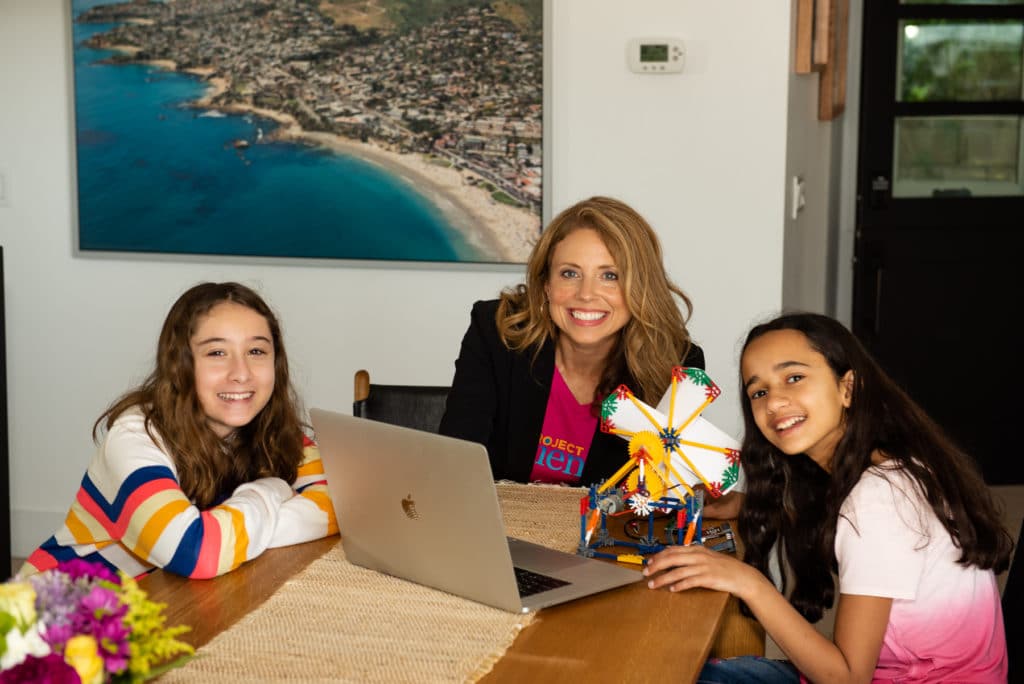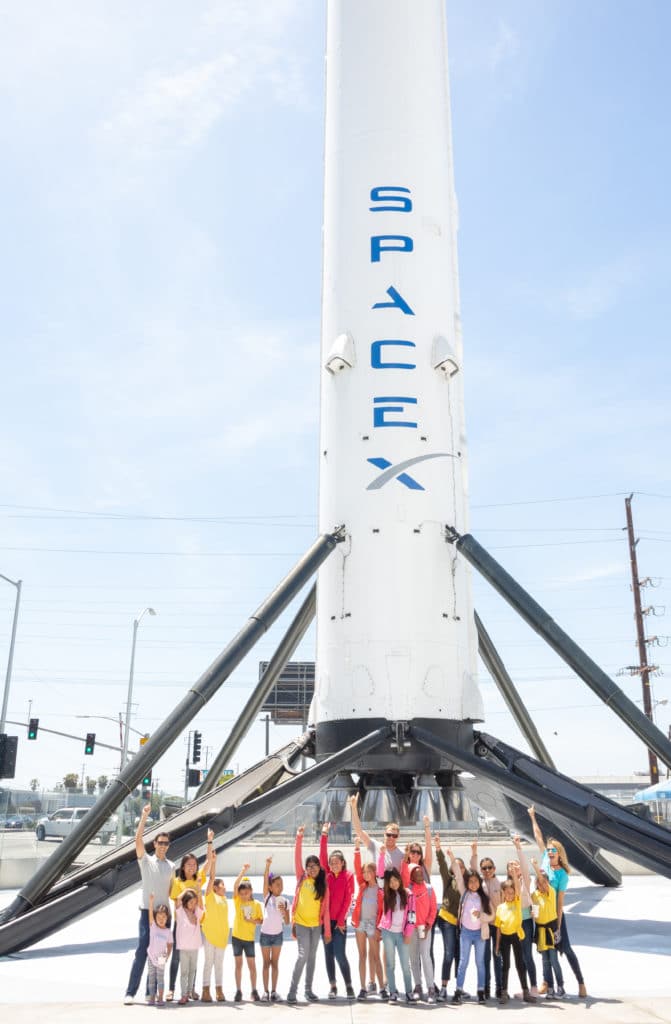By: Ashley Byars
For Momentum sat down with Sandy Marshall, Founder and CEO of Project Scientist, to understand how she’s working with corporate partners to help the next generation of girls and women protect our planet through Science, Technology, Engineering and Math (STEM) education. Take a look at our questions, Sandy’s answers and new insights in the STEM space.
Q: Why did you start Project Scientist?
A: While on maternity leave with my daughter, I was seeing so many challenges in the news, from hunger to what was then called global warming. All of these disasters, combined with the hormones of being a new mom, led me to call my husband and announce, “We have 18 years to fix these problems!”
I read the National Science Board’s research advancing the theory that the long-term prosperity of our nation will increasingly rely on talented and motivated individuals in STEM. I also learned that to drive innovation in STEM, we need to support girls at a young age, build up their confidence in STEM subjects, and support them in building a vision for themselves to believe that they too can be a scientist.
A study from the Girl Scouts Research Institute found that “more STEM girls have philanthropic motivations such as helping people and making a difference in the world, compared to non-STEM girls.” If girls are already coming to STEM intending to use their knowledge to solve problems and help people, then having more girls at the STEM table should drive innovation and attention to solving problems beyond economic gain.
I ultimately started Project Scientist when my newborn turned four and I couldn’t find a science program for girls her age. We began with her and a few of her friends. Slowly I realized what I had created could be the answer for thousands of girls. When NASA agreed to have their female leaders Skype with our girls, I realized we had the makings of something special.
Q: Why is STEM education for girls an important cause to champion in 2022?
A: The U.S. Census Bureau tells the story: “Despite making up nearly half of the U.S. workforce, women are still vastly under-represented in the science, technology, engineering and math (STEM) workforce.”
Women made up 48% of the U.S. workforce in 2019, but only about 27% of STEM workers. Only roughly 15% of American engineers are women. The figures drop to single digits for women of color in some STEM careers.
At the same time, STEM education suffered in schools nationwide during COVID-19. McKinsey & Company reports the pandemic left K-12 students five months behind in math. The learning loss was even more significant for schools with a majority of Black students and schools in under-resourced areas, which, on average, ended the 2020-21 school year with six or seven months of unfinished learning in math.
Under-resourced girls are facing STEM learning loss just as demand for STEM workplace expertise is growing. Girls and women “are systematically tracked away from science and math throughout their education, limiting their access, preparation and opportunities to go into these fields as adults,” according to the American Association of University Women .
Project Scientist pushes back against gender stereotyping and limited expectations for girls in STEM. Economists forecast that our nation will have 3.5 million STEM jobs by 2025, but more than two million of them will go unfilled. Our world needs a variety of people focused on the challenges we are facing, and Project Scientist is doing our part to ensure girls and women are properly represented.
Girls from anywhere in the U.S. can be part of the Project Scientist after-school STEM Club, Summer Lab and Scholars program, exploring Project Scientist at home. Girls receive lab kits in the mail with all the supplies they need to do hands-on experiments, led by our teachers. About 85% of girls come from low-income households and receive scholarships from Project Scientist to attend. We offer scholarships based on eligibility for free and reduced-price school lunches. Project Scientist pays for Internet access and a tablet for girls who need these resources to participate. Our programs are also offered in three time zones.
Through our hybrid model, we partner with other nonprofits who host girls in-person in schools, community centers and other locations. Our teachers deliver the STEM experience virtually and provide training for an in-person facilitator. We send laboratory kits directly to the facilitating partner with hands-on experiments designed to be conducted alongside virtual instruction.
As of 2021, Project Scientist girls are:
- 33.9% African American
- 23.6% Hispanic/Latino
- 19% White
- 14.9% Asian/Pacific Islander
- 1.2% Native American
Read More about the Project Scientist Impact and take a look at the interactive 2020 Annual Report.
Q: Project Scientist was recently awarded a $1 million grant over three years from Trane Technologies. What are you planning to do with the funds?
A: This financial gift to us is part of Sustainable Futures, a Trane multiyear corporate citizenship strategy to expand underrepresented students’ access to science, technology, engineering and math education, support healthy classrooms and promote skill building for green careers.
Employees at Trane Technologies have been active volunteers with us as STEM Superstars. These female role models show our girls all the STEM careers they can pursue.
The $1 million grant will also help us launch our first international initiative, a virtual pilot program for girls ages four to 12 in Mexico, slated for Fall 2022. This Spanish language programming will be offered to dual-language schools in the U.S. as well to help increase the pipeline of qualified, diverse STEM workers in both countries. Trane has operations in Mexico and first suggested our expansion there.
Q: What have corporate partnerships meant to your nonprofit over time?
A: Our corporate partners are significant donors and volunteers who make our work possible. We lead expeditions to top STEM companies—previously in person, now virtually—so girls can get a behind-the-scenes look at places where they might work someday. It’s another part of our program that makes the possibility of a STEM career real to a girl who has big dreams but may not know anyone who works in STEM. Virgin Hyperloop, JetBlue, Dole, General Mills, Alcon, Corelogic and many more corporate partners have hosted our girls on expeditions.
My advice for other nonprofits is to look for corporate partners whose values mirror your own. We sought out companies that intrinsically understood that a more diverse STEM workforce will lead to the innovation the world demands.
If you’re looking for more ideas around how to best partner with corporations on STEM campaigns, For Momentum is here to help. Let’s connect.




Leave a Reply